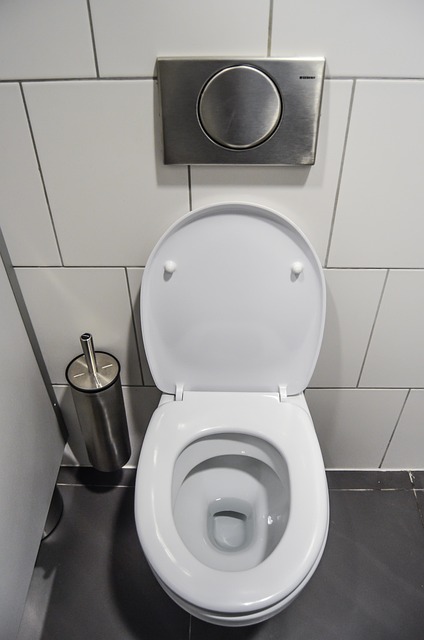Water-saving bathroom fixtures like faucet aerators are gaining popularity for their simplicity and effectiveness in conserving resources. By mixing air with water, these devices reduce flow rates while maintaining pressure, leading to cost savings on water bills. Easy to install, they prevent mineral buildup, prolonging fixture life. Mechanical and digital aerator types offer various control options, making them suitable for different needs. Homeowners can easily incorporate these fixtures into their bathrooms for eco-friendly practices without extensive renovations.
Looking to reduce water usage without sacrificing pressure in your bathroom? Installing aerators on faucets is an effective and simple solution. This article explores the concept of water-saving bathroom fixtures, delving into the benefits and technology behind faucet aerators. We’ll guide you through different types of aerator technologies and provide a DIY installation process, empowering you to make a sustainable impact in your home while conserving precious resources.
Understanding Water-Saving Bathroom Fixtures: The Need for Aeration
Water-saving bathroom fixtures have become essential in today’s conscious effort to conserve resources. Among these, aerators on faucets stand out as a simple yet effective solution. By combining air with water, aerators reduce the flow rate while maintaining pressure, ensuring an efficient and satisfying user experience. This is particularly important in bathrooms, where fixtures can contribute significantly to household water usage.
The need for aeration goes beyond mere water conservation. Aerators also help to mitigate the issue of hard water, as they prevent mineral buildup, keeping faucets and showerheads in better condition. They are easy to install and cost-effective, making them an attractive option for homeowners looking to implement eco-friendly practices without major renovations.
What Are Faucet Aerators and How Do They Work?
Faucet aerators are simple, yet effective devices that mix air with water flowing through a faucet, creating a sense of pressure while using less water. They are designed to reduce water flow without significantly impacting water pressure, making them an excellent solution for those looking to incorporate water-saving bathroom fixtures.
These aerators work by slowing down the water’s velocity as it exits the faucet while introducing air bubbles. This process not only conserves water but also enhances the overall user experience, ensuring a steady and robust flow despite the reduced water usage. They are easy to install, usually requiring only unscrewing the existing faucet head and replacing it with the aerator.
Benefits of Installing Aerators: Reduced Water Consumption Without Pressure Drop
Installing aerators on faucets is an effective strategy for reducing water consumption in your home, especially in the bathroom. These simple devices blend air with water to maintain pressure while cutting down on the volume of water that flows from each faucet. This not only helps conserve resources but also contributes to significant cost savings on your water bills.
Aerators are particularly beneficial in households where high water pressure is desired, such as when using showerheads or brushing teeth. By introducing air into the water stream, aerators prevent a noticeable drop in pressure, ensuring a satisfying and efficient bathing experience. This makes them ideal for those looking to incorporate water-saving bathroom fixtures without compromising on performance.
Types of Aerator Technologies: Which One is Right for Your Taps?
When it comes to choosing the right aerator for your faucets, understanding the different technologies available is key. These innovations are designed to mix air with water, creating a sensation of full flow while actually reducing the water usage. The two primary types are mechanical and digital aerators. Mechanical models use a small internal device to mix air and water, providing a consistent flow. They’re reliable and cost-effective, making them a popular choice for many households.
Digital aerators, on the other hand, offer more advanced control. These fixtures use sensors and technology to adjust the water flow dynamically, depending on user needs. While they might be pricier, digital aerators provide precise water conservation, especially in high-traffic areas like bathrooms. They can detect when a faucet is in use and precisely regulate the water release, making them ideal for those looking to maximize water savings with modern technology.
DIY Guide: Step-by-Step Process for Installing Aerators on Faucets
Installing aerators on faucets is a straightforward DIY project that can significantly reduce water flow in your bathroom while maintaining pressure. Here’s a step-by-step guide to help you transform your bathroom into a more water-efficient space with just a few simple tools and components.
Begin by gathering the necessary materials: aerator fixtures, a wrench or pliers, and any screws or washers included with your purchase. Next, turn off the water supply valves beneath the sink. Unscrew the existing faucet head using your tool of choice. Be mindful of retaining any springs or o-rings for future use. Once removed, replace the old fixture with the new aerator, ensuring a secure fit by tightening it firmly with your wrench or pliers. Double-check that the water supply valves are still closed before proceeding to test the new aerator. Turn on the valves and observe the flow rate at the faucet. If satisfied, you’re ready to enjoy the benefits of your water-saving bathroom fixtures.
Installing aerators on faucets is a simple, effective way to incorporate water-saving bathroom fixtures into your home. By enhancing water flow efficiency without sacrificing pressure, these devices offer a practical and sustainable solution for reducing water consumption. With various aerator technologies available, you can choose the ideal option for your taps, ensuring both conservation and satisfaction. Embrace this easy upgrade and contribute to a greener future while enjoying efficient, robust flows in your bathroom.
